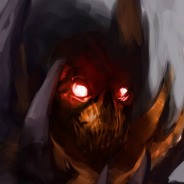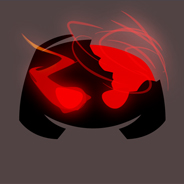Ответить на вопросы по тексту. 100 ! the track is one of the basic features of a railway. it is also called the permanent way. the fact is that in the early days of railroad building the workers first had to lay temporary tracks to transport the materials to the construction site. and only after that they laid down the permanent tracks on the permanent way, as it was called. the permanent way consists of rails, ties and ballast. the railroad track of today is quite different from that used in the early days of railways. the first tracks had no ballast, the rails were made of wood and rested on heavy blocks of granite. then the wooden rails were replaced by iron ones, and the granite blocks were replaced by wooden ties. this kind of track, however, was not strong enough for heavy steam trains. the discovery how to make cheap steel was of great importance to the railways for, when placed in the same track, steel rails had a life 15 (fifteen) times as long as iron rails. the distance between the rails is called the gauge. the standard gauge in most countries is 1,435 ( one thousand four hundred thirty five ) mm while in russia the railroads have a gauge of 1,524 (one thousand five hundred twenty four) mm. that gauge was finally adopted when the first main - line moscow – st. petersburg railway was under construction (1842 one thousand eight hundred forty two - 1851 one thousand eight hundred fifty one). thus russia was the world's first country where the uniform gauge was adopted for all railways. in america the gauge was unified only in 1886 (one thousand eight hundred eighty six) . the place where the ends of the rails meet in the track is known as the rail joint. the rail joint has always been the weakest part of the track for nearly all the rails wear out first at the ends. some railroads have two or more tracks. in order to make the trains pass from one track to another the railroads have a switch which is a very important element of the track. the rails differ greatly in weight according to the kind of traffic which they are to carry when placed in the track. the largest and heaviest rails are laid in the main-line tracks for it is these tracks which carry the largest volume of traffic. the ties on most tracks were almost all of wood and in order to make them last longer they were treated with creosote. the ties are not laid upon the earth for the earth cannot support the track structure. they rest upon a bed of crushed rock, or gravel, which is called ballast. ballast supports the track structure, holds the track in position and provides needed drainage. the history of railways is more than one century and a half. during this period the track structure has been substantially improved. one of the greatest improvements was the elimination of rail joints. in order to reduce the number of joints the rails are welded into continuous lengths.these continuous or long welded rails have greater strength and provide a smoother running of trains at far greater speeds. another improvement which has made it possible to increase speeds on railways is the use of concrete sleepers. thus in some countries , concrete sleepers have replaced wooden ones on heavily used main lines because of their advantages. concrete sleepers have a longer life and a far greater weight than those made of wood. the greater weight of concrete sleepers provides the greater stability of track. it is this factor which has greatly contributed to increased speeds. what elements does the permanent way consist of? what is the origin of the term permanent way? what is the difference between the modern railroad track and the track of the early days of railways? what is the gauge and what gauge is used on the russia railways ? why is the joint the weakest part of the track ? what is the switch intended for?
266
478
Ответы на вопрос:
What elements does the permanent way consist of? - the permanent way consists of rails, ties and ballast. what is the origin of the term permanent way? - in the early days of railroad building the workers first had to lay temporary tracks to transport the materials to the construction site. and only after that they laid down the permanent tracks on the permanent way, as it was called. what is the difference between the modern railroad track and the track of the early days of railways? - the first tracks had no ballast, the rails were made of wood and rested on heavy blocks of granite. then the wooden rails were replaced by iron ones, and the granite blocks were replaced by wooden ties. what is the gauge and what gauge is used on the russia railways ? - the gauge is the distance between the rails and in russia the railroads have a gauge of 1,524 mm . why is the joint the weakest part of the track ? - because nearly all the rails wear out first at the ends. what is the switch intended for? - some railroads have two or more tracks. in order to make the trains pass from one track to another the railroads have a switch. /or/ the switch is intended for making the trains pass from one track to another
My family is a very friendly. My mom works at school. My father a very busy man, because he works programmer. My grandma and grandpa aren't work, because they too old. We also have a dog. It is very playful. I love my family!
Объяснение:
фиксики существуют
Популярно: Английский язык
-
Brother reads a book.mother cooks a cake.в отрицательной форме,вопросительной,да,нет(например:...
 Rona123403.03.2022 04:01
Rona123403.03.2022 04:01 -
Присоединяйте две части текста 1.what was the name of the boy 2....
 Вопросникыыы10.12.2022 11:25
Вопросникыыы10.12.2022 11:25 -
If you freeze water, it becomes a solid. это предложение надо сделать...
 частник14.07.2021 07:04
частник14.07.2021 07:04 -
Open the to know what happened to robert...
 megaandreychuk23.04.2023 16:50
megaandreychuk23.04.2023 16:50 -
Составить предложения на . это моя школа. она большая и красивая.в...
 Rube13454hill07.01.2021 05:19
Rube13454hill07.01.2021 05:19 -
Нужно сочинить на страшную коротенькую с хорошим концом)) за ранее...
 darasnezko29720.01.2020 18:09
darasnezko29720.01.2020 18:09 -
Написать эссе на тему: почему стоит изучать другие языки? (10 предложений)...
 jovriijovrikJovrik12.06.2020 17:30
jovriijovrikJovrik12.06.2020 17:30 -
Ккаждому предложению написать отрицательное предложения общий вопрос...
 hardrop29.03.2022 17:54
hardrop29.03.2022 17:54 -
нужен ответ. Complete the second sentence so it has a similar meaning...
 milka195121.12.2021 16:39
milka195121.12.2021 16:39 -
Ребята пэжэ с 11 до конца 3...
 marinaozerova323.03.2022 22:21
marinaozerova323.03.2022 22:21
